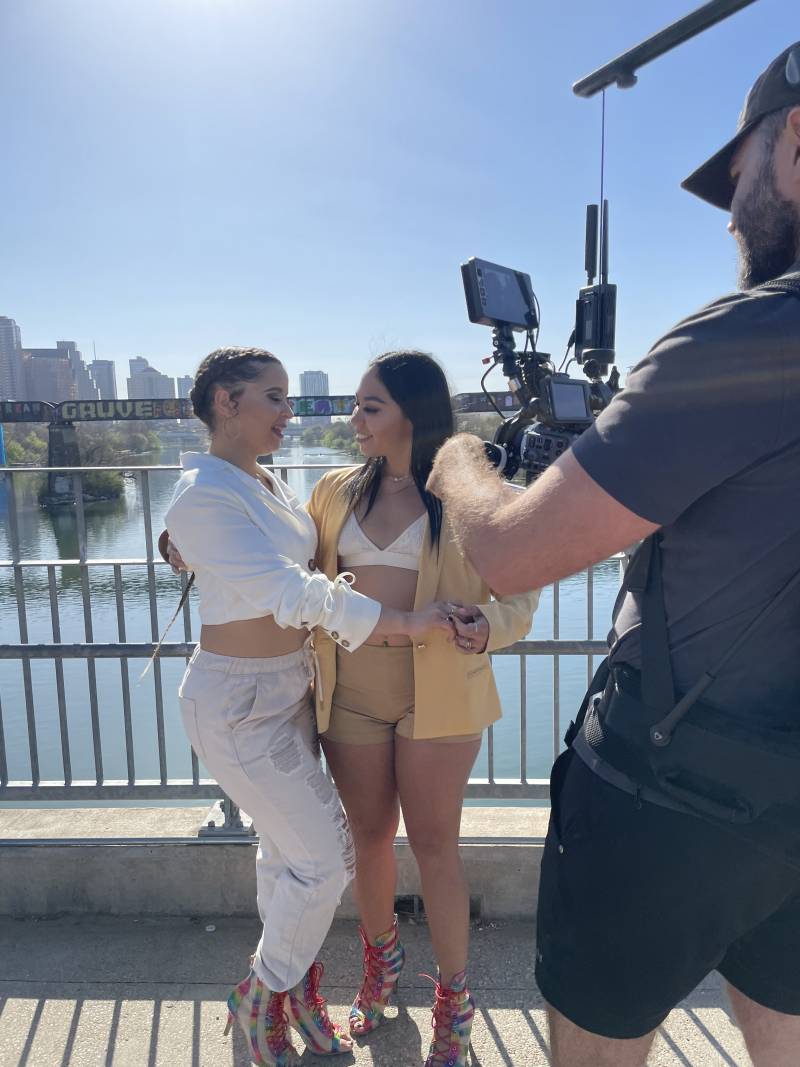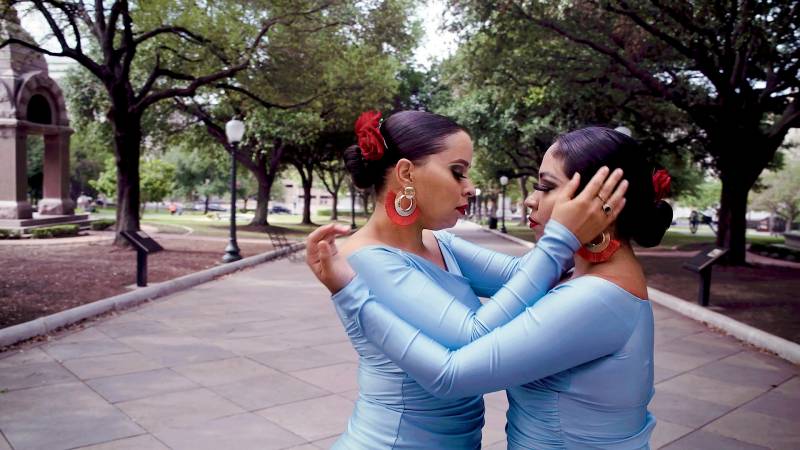If Cities Could Dance is KQED Arts and Culture’s award-winning video series featuring dancers across the country who represent their city’s signature moves. Subscribe to our YouTube Channel to never miss a new episode.
When salsa dancers Audrey Guerrero and Angie Egea first got together, their love opened up new expressions and possibilities both on the dance floor and off. “I probably wouldn’t be out if I hadn’t met my wife,” says Guerrero, who married Egea in 2019.
For Egea, creating art together gives the couple power and strength to “step into who we really are.”
Part of a new generation of dancers embracing fluidity of gender roles in salsa dancing, the non-binary couple performs and teaches classes in Austin, Texas. They are known in the dance community as Angie & Audrey, a.k.a. “The Kueen & Queen of Non-Binary Afro Latin Dance.”
The couple take turns leading and following, and often switch roles within a dance. “There is this connection that you have to build with your partner, you have to be vulnerable, open to connecting,” says Egea. “It almost creates this bubble of energy, and that’s exhilarating.”

In 2008, Egea emigrated from Colombia to Boston to pursue a professional dance career, and started out dancing with a male partner; she wasn’t out about her queer identity in dance circles. But when she met Guerrero—who had emigrated there from the Dominican Republic—the couple decided to incorporate their queer identities on the dance floor. Initially, they say, they were met with resistance from members of the dance community.


